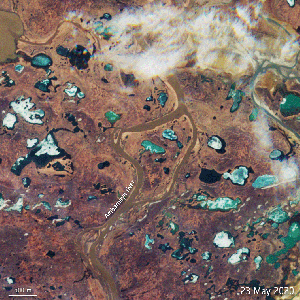Science
NASA's OSIRIS-REx Discovers Sunlight Can Crack Rocks on Asteroid Bennu
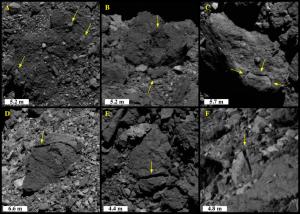
Examples of disaggregation (top) and linear fractures (bottom) in boulders on asteroid Bennu from images taken by NASA’s OSIRIS-REX spacecraft. In the bottom row, fracture orientations are (d) west-northwest to east-southeast and (e, f) north to south.
- Read more
- 250 reads
Presence of airborne dust could signify increased habitability of distant planets, research shows

A visualization of three computer simulations of terrestrial exoplanets, showing winds (arrows) and airborne dust (color scale), with an M-dwarf host star in the background.
- Read more
- 245 reads
Saturn's Moon Titan Drifting Away Faster Than Previously Thought

Larger than the planet Mercury, huge moon Titan is seen here as it orbits Saturn. Below Titan are the shadows cast by Saturn's rings. This natural color view was created by combining six images captured by NASA's Cassini spacecraft on May 6, 2012.
- Read more
- 245 reads
Three New Views of Mars' Moon Phobos

Six views of the Martian moon Phobos captured by NASA's Odyssey orbiter as of March 2020. The orbiter's THEMIS camera is used to measure temperature variations that suggest what kind of material the moon is made of.
- Read more
- 265 reads
Progress on Cruise Motors, Future Wing Sets Stage for All-Electric X-57 Ground Tests
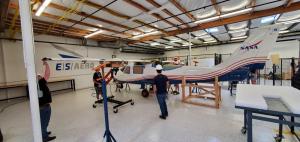
Engineers at Empirical Systems Aerospace, or ESAero, perform fit checks on the future wing to be used on the final configurations of NASA’s all-electric X-57 Maxwell, at their facility in San Luis Obispo, California. Using a “fit check” fuselage, seen here, the team is able to determine the safest and most efficient method of integrating the wing to be used in Mods III and IV of X-57, while the primary fuselage prepares for ground, taxi, and flight tests at NASA’s Armstrong Flight Research Center in Edwards, California.
- Read more
- 243 reads
ESA moves ahead on low-cost reusable rocket engine
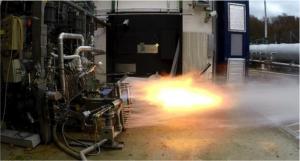
Prometheus gas generator test at DLR Lampoldshausen.
- Read more
- 233 reads
Now complete, DESI is poised to begin its search for answers about dark energy

Now complete, DESI is poised to begin its search for answers about dark energy
- Read more
- 236 reads
New 3D Mapping Technique Improves Landslide Hazard Prediction
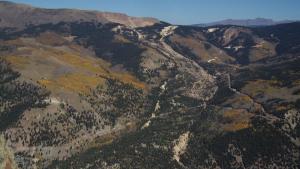
This image shows the Slumgullion Landslide in southwestern Colorado. The central area above the highway moves almost an inch per day; the lower part moves much more slowly.
- Read more
- 221 reads
